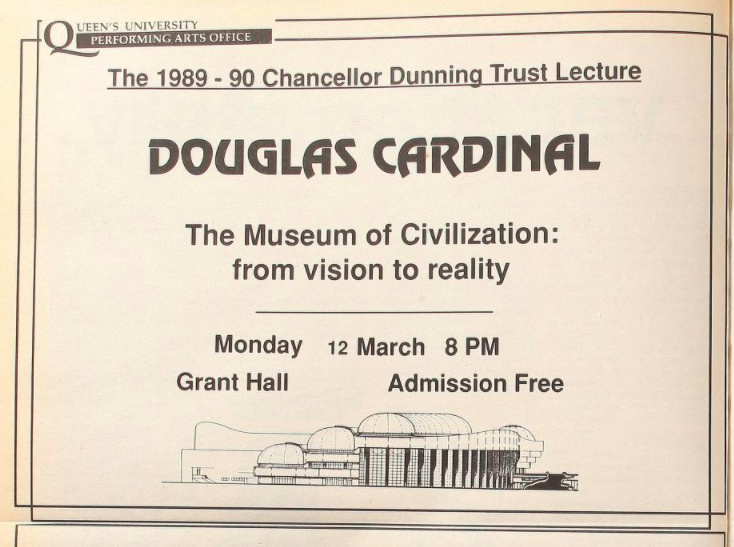
Douglas Cardinal is an Indigenous Canadian architect best known for his designs for the Canadian Museum of History in Gatineau and the National Museum of the American Indian in Washington, DC. He also designed the Edmonton Space Science Centre and the Gordon Oakes Redbear Student Centre at the University of Saskatchewan. Cardinal’s design philosophy centered on creating buildings that responded to nature and the organic rhythm of life, in sharp contrast to the modern design of the postwar period. He graduated from the University of Texas at Austin, where he also worked with human rights initiatives, in 1963. In 1964, he opened a practice, and became one of the first architects in North America to use computers in the design process. Douglas was a forerunner of sustainability, green buildings and ecologically designed community planning. In recognition of his work, Cardinal has been awarded 20 honorary degrees, Gold Medals of Architecture in Canada and Russia, and an award from United Nations Educational Scientific and Cultural organization (UNESCO) for best sustainable village. He was made an Officer of the Order of Canada and declared “World Master of Contemporary Architecture” by the International Association of Architects.
Cardinal’s lecture traced his career and the architectural philosophy he had developed through his buildings, which foregrounded the need for harmony between the built and natural environments, and sought to serve people by designing buildings that fit their needs and fit the land. Cardinal opened by reflecting on what his elders taught him about knowledge, suggesting that creativity is found only beyond the grasp of what humans know. Taking the approach of not knowing was the most productive method, since it opened possibilities rather than prescribing options based on preconceived notions of what was correct. He discussed how he began, early in his career, to see buildings as living being with stomachs (cafeterias), hearts, mouths (shipping and receiving). Taking this view, he decided to design buildings inside out, allowing the purpose to determine the form rather than designing a building and then trying to make it fit its purpose. He discussed this in relation, too, to his experience building his own house in Alberta, where he attempted to use the natural environment to make it self-sustaining. Cardinal also discussed his pioneering work in using computer-aided design in architecture. When his employees’ time was freed from calculation and specifications, they had more room to be creative, to scrap entire designs and start from scratch if needed. With their new technologies, his practice was able to take on more and more challenging commissions, including eventually the National Museum.
His lecture was held on March 12, 1990. Listen to it below.